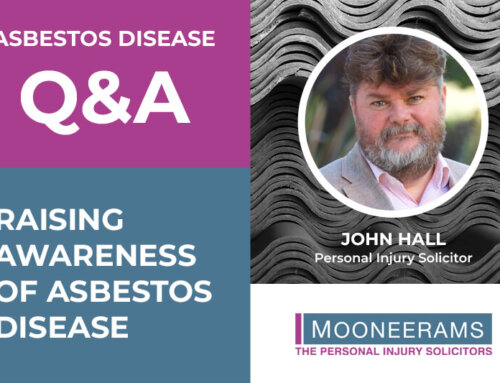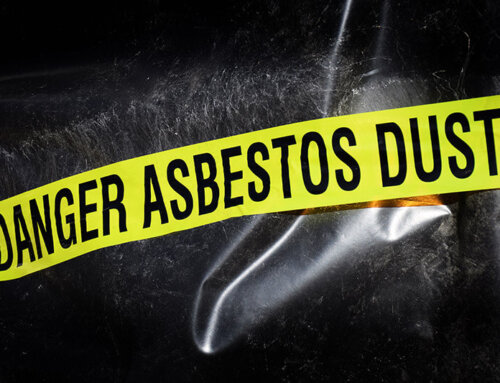There are four main forms of asbestos disease – asbestosis, pleural thickening, mesothelioma, and asbestos lung cancer. All four types of the disease are caused by exposure to asbestos. Asbestos exposure was rife in all kinds of industry throughout the UK in the 20th century. Eventually, asbestos was banned from being imported or put to use in any form in 1999. The most toxic kinds of asbestos were banned in 1985.
The decades of the 1950s, 60s and 70s together formed the period when asbestos exposure was most rife. The disease takes a long time to develop from exposure to diagnosis. For this reason, people are still being diagnosed with asbestos disease today, some 40 or more years after exposure to asbestos.
The kinds of industries which used asbestos in its various guises were wide and varied. Dockworkers, electricians, woodworkers, railway engineers, power station workers, steelworkers – the list is endless.
All of these workers and more did jobs which caused asbestos particles to form into clouds of dust in their workplaces. It was rare indeed if any of the workers mentioned above were supplied with masks or any other form of what we would now refer to as PPE.
As a result of this lack of protection, workers breathed in airborne particles of asbestos. They often did this in large quantities, especially if they worked in the same occupation for years on end.
The asbestos fibres went into the lungs of their victim. The more toxic types of asbestos in everyday use were:
- blue asbestos (crocidolite), and
- brown asbestos (amosite).
The fibres from both would hook onto the lungs or lining of the chest once inhaled and remain there. Over time, they caused severe damage to both the lungs and the lining of the chest.
At the same time asbestos exposure was rife, so too was smoking. It is now hard to believe in 1974, 51% of all men and 41% of women in the UK, aged 16 and over, smoked. Compare with the statistics for 2019, when just 14.1% of people aged 18 or over were estimated to be smokers.
What effect does smoking have on someone who has been exposed to asbestos?
Smoking does not cause mesothelioma, asbestosis, or pleural thickening. However, it contributes to the way these asbestos diseases develop. It can also have a bearing on the severity of the illness.
- As any smoker will know, smoking diminishes the lungs’ ability to take in oxygen.
- Smoking harms cilia, the tiny threads lining the lungs and which help to keep them clean. The reduced effectiveness of the cilia means asbestos fibres do not get expelled from the lungs by, for example, coughing.
- Like asbestos, smoking scars the lungs. The combination of smoking and asbestos exposure can cause asbestosis to develop at an earlier stage than it would have in someone who never smoked.
Smoking, asbestos exposure and lung cancer
According to the charity Cancer Research UK, 72% of lung cancer cases in the UK are caused by smoking. The same source estimates in 6 – 8% of instances of the disease, asbestos exposure is the cause.
There are other causes of lung cancer too, but overwhelmingly smoking is the predominant one.
What happens when someone who is, or was, a smoker also suffers exposure to asbestos and gets lung cancer?
Many of the 2500 people who die each year from lung cancer linked to asbestos exposure also smoked at some stage in their lives. Remember, we are still dealing with cases where exposure to asbestos took place in the 60s, 70s, 80’s or 90s – perhaps even earlier. As previously mentioned, smoking was commonplace during those decades, particularly amongst male, blue-collar workers.
‘Causation’ or, put more simply, the cause of lung cancer can, in a case where the victim has also been a smoker, be challenging to establish.
However, the following principles have developed over a number of years:
- Workers who have been heavily exposed to asbestos are at double the risk of getting lung cancer than the rest of the population. It is the same whether they are smokers or non-smokers.
- To prove lung cancer has been caused by asbestos, the victim needs to prove they have been exposed to a large quantity of asbestos. It is possible to work out the dosage of asbestos a person has been exposed to by using the formula contained in a research document called the Helsinki Criteria for Diagnosis and Attribution 2014.
As a rule of thumb, one year of heavy asbestos exposure or between 5 and 10 years of moderate exposure will at least double a person’s risk of getting asbestos-related lung cancer.
- The risk of someone who smokes getting lung cancer increases by a multiple of 10.
- The chances of someone who is exposed to asbestos dust getting lung cancer increases by a multiple of 5.
- For someone who has smoked and been exposed to asbestos, the risk of getting lung cancer increases by a multiple of 50 (10 x 5).
Could a lung cancer victim who had been exposed to asbestos but was also a smoker expect to get asbestos disease compensation?
We now have a decision of the Court of Appeal to assist us in answering this question. The case is Department for Communities and Local Government v Blackmore
Facts of the case:
- The case was brought by the executors of Cyril Hollow who died of lung cancer in 2010.
- For a long period of his working life, Mr Hollow had worked as a decorator in the Devonport Dockyard.
- Much of his time at work was spent in conditions where there was a significant amount of asbestos dust.
- At no time was he ever provided with a mask or any other form of PPE to protect him from asbestos dust.
- He smoked from the age of 14. He smoked 20 cigarettes a day until he was 69 years of age, when he cut down to approximately 12 per day.
- On two occasions, he tried to give up, without success.
- He was advised to stop in 1976, after he developed a lung condition, which later resolved.
- Mr Hollow started to get the symptoms of lung cancer in 2009 and died in 2010.
- Analysis of his lungs after his death showed the numbers of asbestos fibres on his lungs came to a level at which Mr Hollow had been at more than double the risk of getting lung cancer.
Mr Hollow’s Executors brought a claim for asbestos disease compensation against his former employers and by the time the case came to court the employers had already:
a) Accepted the main, primary liability for his death and that it had been caused by his exposure to asbestos whilst working for them (this on the basis of the proven high level of asbestos he had been exposed to). The compensation was agreed at £118, 460.57. You might ask why the matter went to a court hearing then?
b) The Defendants wanted to find out how much of the compensation, if any, the court would deduct as a result of contributory negligence on Mr Hollow’s part, because of his smoking. In other words, they wanted to know what extent he himself had been responsible for getting lung cancer.
At the first court hearing the Judge decided Mr Hollow’s smoking had been partially responsible for him getting lung cancer and considered 30% should be deducted from the compensation award, to reflect this.
Mr Hollow’s former employers appealed this decision on the basis they believed he should have been held to bear a greater share of the overall responsibility for getting lung cancer than 30%. This was on the basis of the extent of his smoking and because he never managed to stop smoking even after he became aware it could cause lung cancer.
The appeal court agreed with the findings of the judge in the original court. In summary these were:
- Mr Hollow was a smoker long before he started to work for his employers and long before it was common public knowledge smoking was a health hazard.
- Mr Hollow did not have an extensive history of being advised to stop smoking.
- He tried to give up smoking twice and did finally manage to cut down.
- Therefore, whilst the risk of getting lung cancer from smoking was probably between double and treble the risk it was from asbestos exposure, the degree of contributory negligence on Mr Hollow’s part remained at no more than 30%.
- It was right Mr Hollow’s employers should bear the lions share of the blame for him getting lung cancer.
Mooneerams solicitors and asbestos disease claims
Asbestos disease compensation claims can be very complicated cases and it is vital if you or a loved one has, or believe you have, asbestos lung cancer or any other type of asbestos disease. and wish to make a claim for asbestos compensation, you choose an expert asbestos lawyer to help you.
At Mooneerams we work in partnership with one of the best asbestos disease solicitors in the country. He has specialised in asbestos work for over 24 years and during this time he has recovered many millions of pounds worth of compensation for asbestos clients all over the country.
Most asbestos disease claims can be handled on a No Win No Fee basis.
Even if you have been a smoker if you want to discuss making an asbestos claim with our asbestos expert call us now on 029 2048 3615 or request a call back by sending your details using the form on this page or by going to our Contact Us page.



